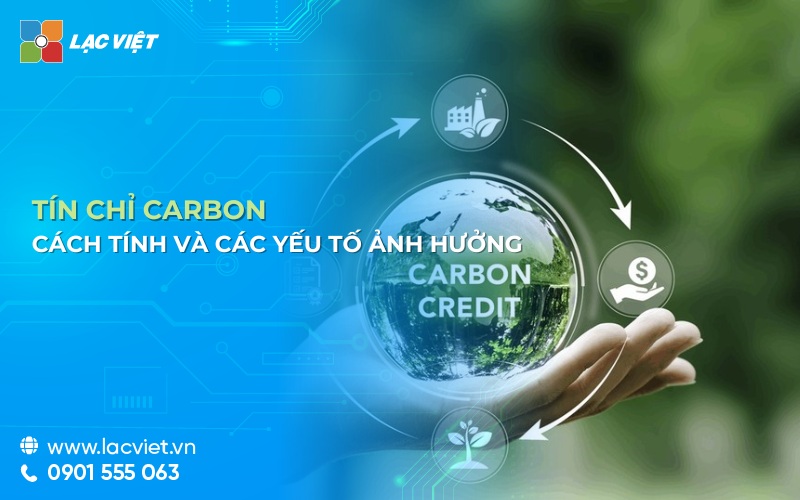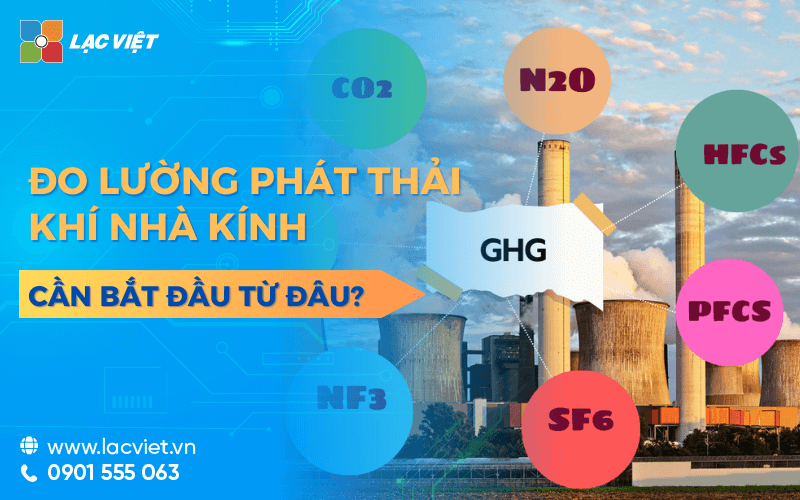The context of climate change are increasingly increasing, the control of greenhouse gas emissions become the top priority of the organizations and enterprises globally. Credits carbon appeared as a solution strategy, not only to help businesses reduce emissions but also meet the international standards, improve sustainability, create opportunities for market entry, global carbon.
Understanding how to calculate credits carbon is a core element to build the production system operate properly prepare, optimize benefits from projects that reduce emissions. This article Lac Viet Computing will provide detailed instructions to help business step by step approach, deployment calculate credit only carbon, from which not only meet legal requirements but also create long-term value for the environment and the community.
1. How to calculate credits carbon with the basic formula
Credits carbon is calculated based on the amount of CO2 or greenhouse gases equivalent to that business has been reduced through specific measures. The basic formula is as follows:
Credits carbon = {CO2 emissions initially} – {CO2 reduction is}
The amount of CO2 emissions initially:
- This is the total amount of CO2 arising from the operation of the business before applying measures to reduce emissions.
- Emissions is determined through the international standards such as GHG Protocol or ISO 14064based on the inventory of greenhouse gases from the operation, production, operation, transportation, energy consumption.
The amount of CO2 reduction is: Be calculated from measures to reduce emissions, such as:
- Use of renewable energy: Replacing fossil fuels with solar, wind, or biomass.
- Improved production process: Use technology to save energy or reduce waste of raw materials.
- Project carbon offset: Participate in projects such as REDD+ (protected forest) or VCS (voluntary carbon standard).
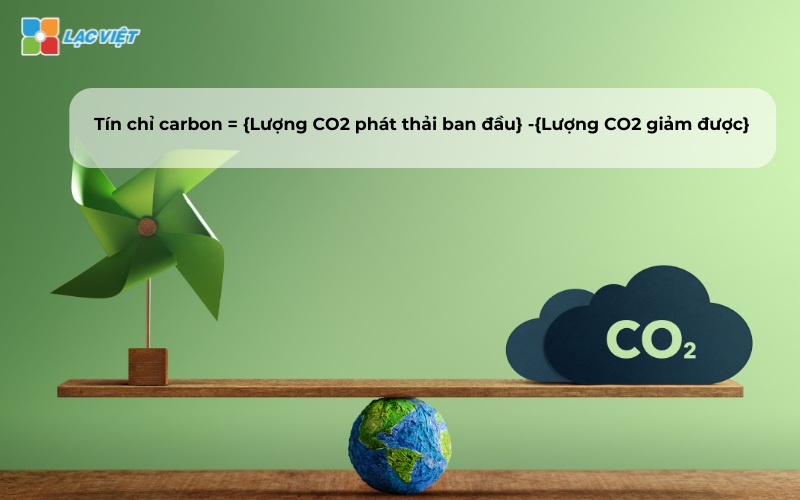
For example:
- A business using 1,000 liters of diesel (the emission is 2,63 kg CO2/liter). The amount of CO2 emissions will initially is: 1,000 liters X 2,63 kg CO2/liter = 2.630 kg CO2(2,63 tons of CO2)
- If the business is switch to using renewable energy, lose 1,000 tons of CO2 credits carbon will get is: Credits carbon = 2.630 tons of CO2 − 1,000 tons CO2 = 1.630 credits carbon
- Scope 3 Emission is? Comprehensive guide to measuring and managing emissions indirect
- CBAM is what? What should prepare to cope with adjustment mechanisms border carbon of the EU?
- What is CO2 offset Point? Explained in easy to understand and practical applications for business
- Carbon Neutral is what? Roadmap to help businesses achieve carbon neutral
2. The method applied to calculate credits carbon
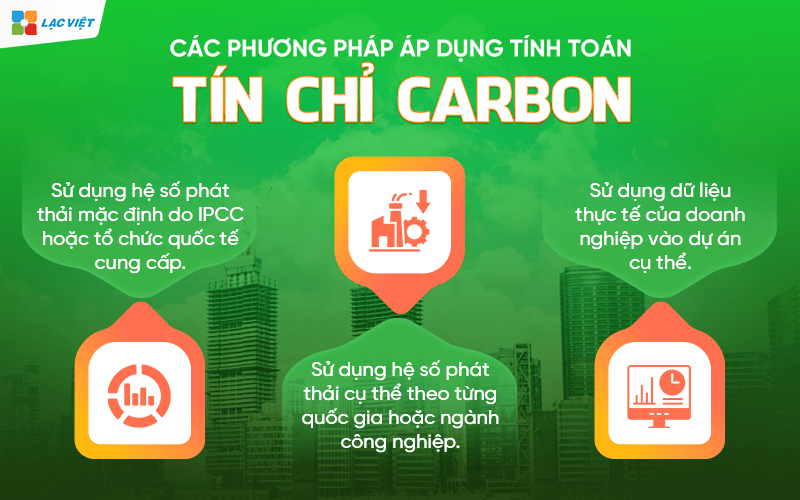
2.1 supply Method 1: Use the emission default by the IPCC or international organization provides.
Characteristics: Simple, easy to implement, but the accuracy is not high because not reflect the specific conditions of each business.
For example: A factory replacement 1,000 liters of diesel oil by the solar:
- The emission diesel is 2,63 kg CO2/liter.
- The amount of CO2 reduced: 1,000 liters × 2,63 kg CO2/liter = 2,63 tons CO2
2.2 Method level 2: Using emission factors specific to each country or industry.
Characteristics:
- In accordance with the area or industry conditions emission characteristics.
- Requires the business to have specific data from the supply chain and manufacturing operations.
For example: Calculate emissions from the production of 1 ton of steel in Vietnam (the coefficient of the average emissions is 1,85 tons CO2/ton of steel).
2.3 Method level 3: Using the actual data of the enterprise and project specific.
Characteristics:
- The highest accuracy for reflection conditions, the actual operating of the business.
- Requires more time and resources to collect and analyze data.
For example: A factory system installation, solar energy, 50% reduction of electricity consumption from the national grid. Number of credits carbon is calculated based on the amount of CO2 reduced to the fact from power consumption.
3. Example illustration credit carbon
Projects to reduce emissions at the factory:
Project information: A factory switch from using coal to natural gas, reducing the amount of CO2 significantly.
Parameters:
- The amount of CO2 emissions initially (as of coal): 5,000 tons of CO2/year.
- The amount of CO2 reduced when switching to natural gas: 2,000 tons of CO2/year.
How to calculate credits carbon: Credits carbon = 5,000 tons of CO2 − 2,000 tons of CO2 = 3.000 credits/year
Results: Business get 3.000 credits carbon per year from this project, can be used to offset emissions or join traded on the carbon market.
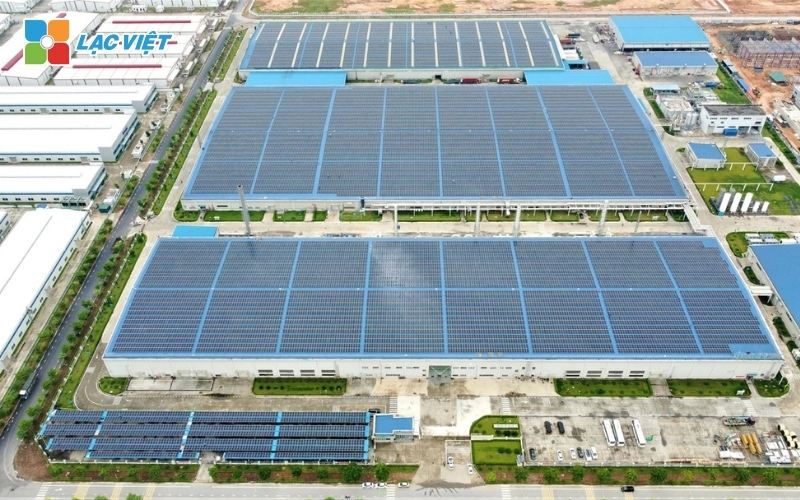
- Carbon Footprint is? Calculate, reduce the Carbon footprint for your business
- Business how to get credits carbon accordance with international standards?
- Coefficient of Co2 emissions according to the IPCC and any conversion of the form of energy
- Net Zero is what? Roadmap 2050 and solution goal commitment
4. The factors that affect the calculation of credits carbon
4.1. Type of emission-reduction project
Type of project emission reduction are important factors to decide how to calculate credits carbon. Each type of project brings efficiency to reduce emissions different from that affect the number of credits carbon business can get.
- Project renewable energy such as solar, wind, hydropower alternatives to fossil fuels does not create CO2 gas during operation, thus significantly reducing the amount of greenhouse gas emissions.
- Project forest conservation: Forest conservation and reforestation to absorb CO2 from the atmosphere. The forests act as “carbon sinks,” absorbing the CO2 in the photosynthesis process. Project REDD+ in South-East Asia has helped conservation 500.000 hectares of forestabsorbing medium 1 million tons of CO2 each year.
- Project process improvement industrial: Optimized production processes to reduce energy consumption and reduce greenhouse gas emissions. Use modern technology to help increase energy efficiency and reduce CO2 emissions.

4.2. Technology applied
The modern technology plays a decisive role in increasing efficiency, reducing emissions and calculate credits carbon.
- System solar:
Advantages: Completely eliminate CO2 emissions in the production process, power; low operating Costs after installation.
Practical example: A business use, solar energy system, solar 10 MW, reduce emissions 5,000 tons of CO2/year.
- System to capture and carbon storage (CCUS):
Advantages: Capturing CO2 from industrial plants and securely stored underground or reused in industrial processes other. High efficiency with the industry's large emitters, such as cement, chemicals.
Practical example: A cement factory applied CCUS seized 90% of CO2 emissions, equivalent 900,000 tons of CO2/year.
- IoT technology and AI:
Advantages: Optimized production processes, emission monitoring in real time. Help businesses make decisions quickly to reduce emissions.
Practical example: A plant using AI to monitor energy consumption, reduce 10% of CO2 emissions/year.

4.3. Standard measurement
To ensure transparency and accuracy in the calculation of credits carbon, businesses need to comply with the standard international measurement.
GHG Protocol: This is the standard to be applied most widely in the world to inventory and report on greenhouse gas.
Scope of application:
- Scope 1: emissions directly from the business.
- Scope 2: emissions indirectly from energy purchased in.
- Scope 3: All other emissions in the supply chain.
Advantages: Provide the measurement method and comprehensive report.
For example: A business, perform inventory, according to the GHG Protocol defines the amount of CO2 emissions from production and operation is 50,000 tons/yearfrom that construction plans to reduce emissions accordingly.
PAS 2060: Is the international standard for the calculation and announced carbon emissions.
Scope of application: Calculate the amount of emission current, and determine the route to reach the level of emissions net of 0.
Advantages: Enhanced reliability in the publication of the emission-reduction project.
For example: A business, heavy industry applying PAS 2060, committed to reaching the level of emissions to net 0 by the year 2035.
ISO 14064: Provides detailed instructions on how to measure, report, verify the amount of greenhouse gases.
Advantages: Ensure transparency, the ability to check your data emissions.
Credits carbon is not only a management tool, emission, but also the lever to business building strategy for sustainable development, increase brand value on the international market. Mastering how to calculate credits carbon help business proactive in reducing the risk emissions, strengthening production efficiency, create new business opportunities through projects that reduce emissions or carbon trading.
Let's start the journey towards a greener future by building production system operate properly prepared and participate in the program credit carbon today. These efforts not only help business meet current requirements but also contribute to protecting the planet for generations to come.

